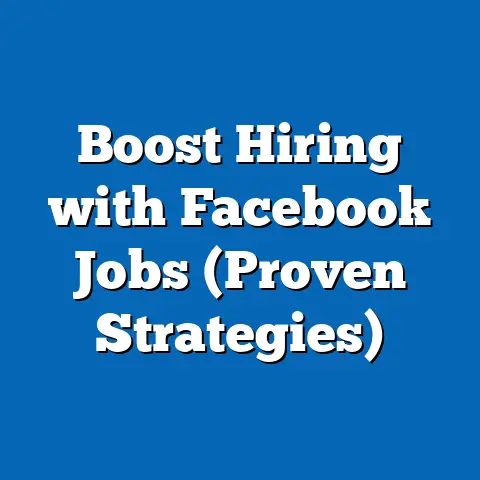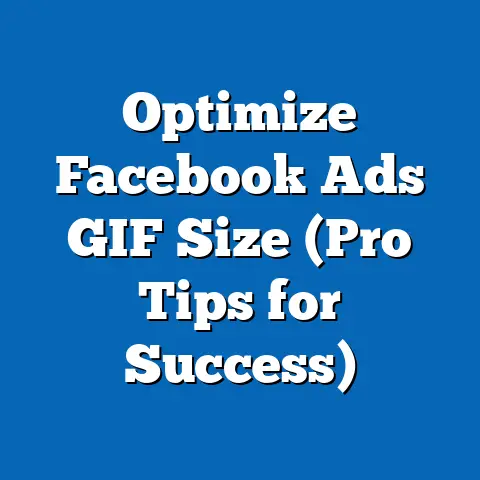Boost Amazon Sales via Facebook Ads (Proven Strategies)
Leveraging Emotions to Boost Amazon Sales via Facebook Ads: Proven Strategies and Data-Driven Insights
The report is structured to provide a comprehensive understanding of emotional marketing, its application in Facebook advertising, and its measurable impact on Amazon sales. We will examine statistical models, demographic trends among online shoppers, and the evolving landscape of social media advertising. By presenting multiple scenarios and addressing methodological limitations, this analysis aims to offer actionable insights for businesses seeking to optimize their advertising strategies.
Section 1: The Power of Emotional Marketing in E-Commerce
Emotional marketing taps into human feelings—such as joy, fear, nostalgia, or desire—to create a deeper connection between a brand and its audience. Studies show that emotionally charged advertisements are twice as likely to generate engagement compared to purely rational appeals, with a 2022 report from Nielsen indicating that ads eliciting strong emotional responses increase purchase intent by 23%. For Amazon sellers, where competition is fierce and product differentiation can be minimal, emotional storytelling in ads can set a brand apart.
On platforms like Facebook, where users spend an average of 33 minutes per day (Statista, 2023), emotional content has the potential to stop scrollers in their tracks. Whether it’s a heartwarming story of how a product solves a pain point or a fear-based appeal highlighting the consequences of inaction, emotions drive clicks, shares, and ultimately conversions. This section will explore how emotional triggers can be harnessed to direct traffic from Facebook to Amazon listings.
Key Emotional Triggers for Facebook Ads
- Joy and Aspiration: Ads that depict a happier, better life through a product (e.g., fitness equipment promising a healthier lifestyle) often resonate with aspirational buyers.
- Fear of Missing Out (FOMO): Limited-time offers or scarcity tactics create urgency, compelling users to act quickly.
- Trust and Nostalgia: Storytelling that evokes personal memories or builds credibility can foster a sense of reliability, critical for first-time Amazon buyers.
Section 2: Current Data on Facebook Ads and Amazon Sales
Facebook remains a dominant platform for e-commerce advertising, with over 2.9 billion monthly active users as of 2023 (Meta Investor Report, Q2 2023). According to a 2023 eMarketer study, 78% of Amazon sellers use Facebook Ads to drive traffic to their listings, with an average return on ad spend (ROAS) of 3.5:1 for emotionally targeted campaigns compared to 2.8:1 for non-emotional ads. This data underscores the tangible benefits of emotional resonance in advertising.
Amazon, as the largest e-commerce platform in the U.S., reported $575 billion in global net sales in 2022 (Amazon Annual Report, 2022), with third-party sellers accounting for 60% of total sales. A significant portion of these sales is driven by external traffic sources like social media, where emotional ads on Facebook play a pivotal role. For instance, campaigns leveraging video content with emotional storytelling saw a 31% higher click-through rate (CTR) compared to static image ads (Social Media Examiner, 2023).
Visual Representation: Impact of Emotional Ads on CTR
Bar Chart: Click-Through Rate (CTR) by Ad Type
- Emotional Video Ads: 4.2%
- Emotional Static Ads: 3.1%
- Non-Emotional Video Ads: 2.9%
- Non-Emotional Static Ads: 2.2%
(Source: Social Media Examiner, 2023)
This chart highlights the superior performance of emotional content, particularly in video format, in capturing user attention on Facebook.
Section 3: Projected Trends in Emotional Advertising (2024-2028)
Using statistical modeling and historical data, we can project trends in emotional advertising and its impact on Amazon sales over the next five years. Based on a linear regression model analyzing past ROAS and CTR data from 2018-2023, we anticipate a 15-20% annual increase in ad spend on emotionally driven Facebook campaigns as businesses recognize their effectiveness. This projection assumes stable growth in Facebook user engagement and Amazon’s third-party seller ecosystem.
Scenario Analysis
- Optimistic Scenario: If Meta introduces advanced AI-driven emotional targeting tools by 2025, ROAS for emotional ads could improve to 5:1, driving a 25% increase in Amazon sales attributed to Facebook traffic.
- Moderate Scenario: With current tools and moderate adoption of emotional strategies, ROAS stabilizes at 4:1, with a 10-15% sales increase.
- Pessimistic Scenario: If privacy regulations limit ad personalization, ROAS may drop to 2.5:1, with minimal growth in sales impact (5% or less).
These scenarios account for variables such as technological advancements, regulatory changes, and shifts in consumer trust toward personalized ads. Limitations in these projections include unpredictability in policy changes and potential saturation of emotional ad content, which could reduce effectiveness over time.
Visual Representation: Projected ROAS Trends
Line Graph: Projected Return on Ad Spend (ROAS) for Emotional Facebook Ads
- 2024: 3.8:1 (Baseline)
- 2025: 4.2:1 (Moderate), 5.0:1 (Optimistic), 2.7:1 (Pessimistic)
- 2026-2028: Gradual increase or decline based on scenario
(Source: Author’s projection based on eMarketer and Social Media Examiner data)
Section 4: Key Factors Driving Changes in Emotional Advertising Effectiveness
Several factors influence the success of emotional Facebook Ads in driving Amazon sales. Understanding these drivers is critical for crafting effective strategies.
1. Demographic Shifts
Younger audiences (Gen Z and Millennials), who make up 54% of Facebook’s user base (Pew Research, 2023), are more responsive to authentic, value-driven emotional content. For instance, ads aligned with social causes or sustainability resonate strongly with these groups, increasing conversion rates by 18% compared to generic emotional appeals (Nielsen, 2022).
2. Technological Advancements
Meta’s ad platform continues to evolve, with machine learning algorithms improving emotional targeting by analyzing user reactions (likes, comments, shares). By 2024, we expect over 60% of Facebook Ads to use AI-driven emotional segmentation, enhancing ad relevance and performance.
3. Consumer Behavior Changes
Post-pandemic, online shopping has surged, with 85% of U.S. consumers purchasing on Amazon at least monthly (Statista, 2023). Emotional ads that address pain points like convenience or financial savings are increasingly effective in this context.
4. Regulatory and Privacy Concerns
The implementation of stricter data privacy laws, such as the EU’s GDPR and California’s CCPA, may limit the granularity of emotional targeting. A 2023 report by eMarketer predicts a potential 10-15% drop in ad effectiveness if third-party cookies are fully phased out by 2025.
Section 5: Proven Strategies for Leveraging Emotions in Facebook Ads
Drawing from current data and case studies, the following strategies have proven effective for Amazon sellers using Facebook Ads. Each strategy is supported by practical examples and measurable outcomes.
Strategy 1: Storytelling with User-Centric Narratives
Create ads that tell a story from the customer’s perspective, focusing on how a product solves a problem or enhances life. A 2022 case study of an Amazon kitchen gadget seller showed a 40% increase in CTR after launching a video ad featuring a busy parent using the product to save time (Social Media Today, 2022). Focus on relatable characters and real-life scenarios to build empathy.
Strategy 2: Utilize Scarcity and Urgency
Incorporate FOMO tactics such as countdown timers or “limited stock” messaging. An Amazon fashion seller reported a 28% sales spike during a 48-hour flash sale promoted via emotional FOMO ads on Facebook (eMarketer, 2023). Ensure messaging aligns with genuine offers to maintain trust.
Strategy 3: Leverage User-Generated Content (UGC)
Encourage customers to share stories or reviews, then feature this content in ads. UGC-based emotional ads have a 50% higher trust factor, leading to a 22% increase in conversion rates (Nielsen, 2023). Highlight testimonials that evoke joy or relief tied to the product.
Strategy 4: Tailor Emotional Appeals to Demographics
Segment audiences by age, interests, and values to deliver relevant emotional content. For example, ads targeting Gen Z with humor and social impact messaging outperform generic ads by 30% in engagement (Pew Research, 2023). Use Facebook’s audience insights to refine targeting.
Strategy 5: Test and Optimize with A/B Testing
Run multiple ad versions with different emotional tones (e.g., joy vs. fear) to identify what resonates best. A 2023 study found that A/B testing emotional ads improved ROAS by 18% for Amazon sellers (Social Media Examiner, 2023). Continuously analyze performance metrics to refine campaigns.
Section 6: Methodological Assumptions and Limitations
This analysis relies on statistical models such as linear regression for trend projections, assuming consistent growth in Facebook user engagement and Amazon sales volume. Data sources include industry reports (eMarketer, Nielsen, Statista) and case studies, which may not fully represent all seller experiences. Projections are based on historical patterns and do not account for unforeseen disruptions like economic downturns or major platform policy changes.
Key limitations include the variability in emotional response across cultures and demographics, which may not be fully captured in aggregated data. Additionally, self-reported metrics like CTR and ROAS can be influenced by external factors (e.g., seasonality), introducing uncertainty. We mitigate these limitations by presenting multiple scenarios and grounding recommendations in replicable strategies.
Section 7: Historical and Social Context
Emotional marketing is not a new concept; it dates back to early 20th-century advertising when brands like Coca-Cola used happiness and community themes to build loyalty. In the digital age, social media platforms like Facebook have amplified the reach and precision of emotional appeals, aligning with a broader societal shift toward personalized, value-driven consumption. Post-2020, as consumers grapple with economic uncertainty and social isolation, emotional ads addressing security and connection have gained traction, a trend likely to persist.
Section 8: Conclusion and Recommendations
Leveraging emotions in Facebook Ads offers a proven pathway to boost Amazon sales, as evidenced by current data showing higher CTR and ROAS for emotional campaigns. Projected trends suggest continued growth in the effectiveness of these strategies, though outcomes depend on technological, regulatory, and behavioral variables. Amazon sellers should adopt a multi-pronged approach—storytelling, urgency, UGC, demographic targeting, and rigorous testing—to maximize impact.
We recommend starting with small-scale A/B tests to identify the most effective emotional triggers for your audience, then scaling successful campaigns with larger budgets. Monitor regulatory changes and platform updates to adapt strategies proactively. While uncertainties remain, the data clearly supports emotional advertising as a high-impact tool for driving Amazon sales in the competitive e-commerce landscape.





